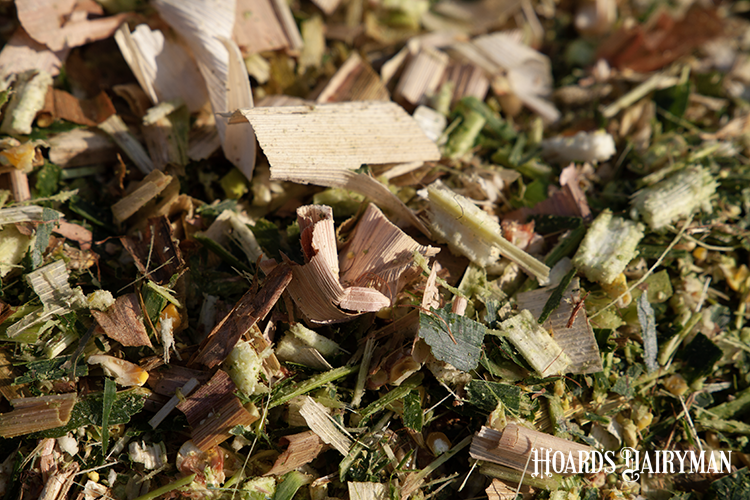
Coming out of the 2021 growing season, starch levels were up in corn silage despite similar moisture measures when compared to the prior year. In theory, more grain equates to more energy. However, many dairy producers soon recognized that the 2021 corn silage crop had suboptimal starch digestibility.
In this instance, we observed a moisture and kernel maturity disconnect. This observational fact muted the higher starch levels, as the 2021 corn silage crop fed a bit poorer and diets needed to be adjusted.
Case in point, one producer commented this past week that their dairy needed to increase diet starch concentration by 2 percentage units to account for the less digestible grain in 2021 silage. This might not seem like a lot, but 2% dietary starch equals nearly 2 pounds of added corn grain!
When thinking about what factors contributed to poorer feeding silage, I attributed the moisture and kernel maturity disconnect to harder grain and less digestible starch despite appropriate silage moisture. I perceived this was due to unique growing conditions in 2021 for many dairy forage growers.
Now, with 2022 silage in the silo, my mindset is changing. This moisture and kernel maturity disconnect is showing up again. Grain levels look to be up, but starch digestibility is again nowhere close to 2020 corn silage. There must be more at play than growing season contributing to this repeated outcome.
Plants have responded
While the growing season and conditions undoubtedly influences the moisture, maturity, and quality outcome, I now believe there are other factors contributing to a moisture and kernel maturity disconnect in silage. Improved agronomic practices and healthier plants have to be influential factors.
In speaking with plant breeders and agronomists, we’ve discussed how seed genetic advances with stay-green technology, drought tolerance, or improved fungicide and crop protection investments are likely resulting in much more healthy plants and green tissue, while the kernels mature right through silage maturity and to black-layer.
This is not to be taken lightly, and our management approach in 2023 will need to adapt. I’m hearing accounts of 62% to 65% moisture silage juicing at the bunker, which history suggests should never happen. Beyond silage, a consultant in Ohio commented that a grain farmer harvested 20% to 25% moisture corn grain but the plants were still green! We’ll need to take these experiences into account in the future. This has been a fascinating development to watch play out as in 2021 and now again for many in 2022.
Looking to learn more?
Tune in to the upcoming November 14 Hoard’s Dairyman webinar, “A forage and feed outlook,” with Mike Hutjens and Mike Rankin and for substantially more insight into 2022 silage. There are vast regional differences and there will be far more to the 2022 crop quality than we’ve discussed here.
Trust that we’ll have additional coverage in the weeks and months to come, but the intent here is to provide a bit of a primer for thoughtful discussion with your crop and harvest management team. Keep an eye on starch digestibility with 2022 silage and get ready to check fecal starch levels. The moisture and kernel maturity gap we’ve recognized now over the past two growing seasons will have to be a focal point with future corn silage management efforts.







